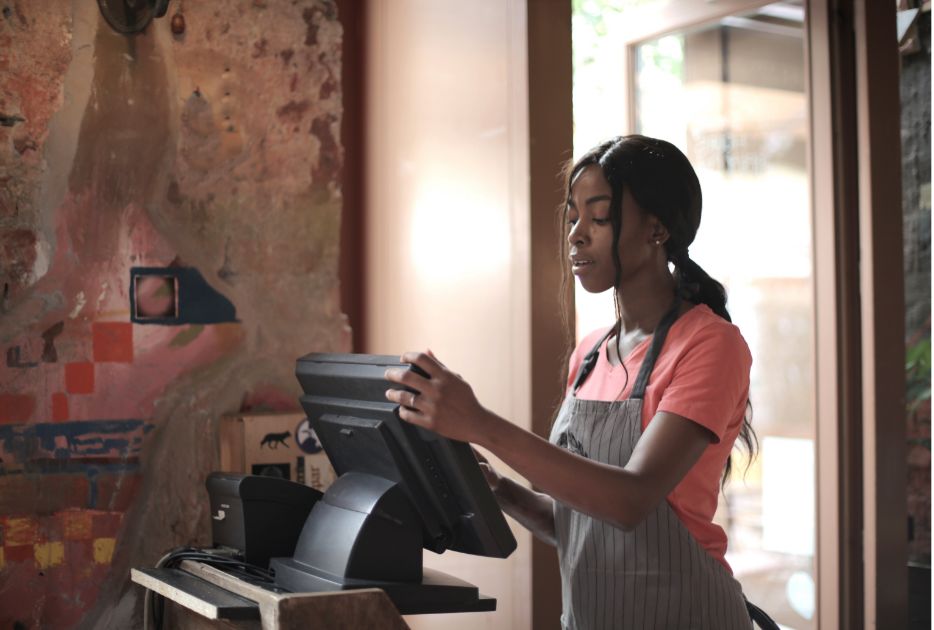How people who hate small talk can learn to enjoy it with a few simple tweaks
One by one, Mark Abrahams tackles the common anxieties and hangups people have about small talk.

Making small talk can be uncomfortable, but it doesn't have to be.
Some people love to chit chat and find shooting the breeze with strangers an enjoyable activity. Others, not so much. Whether it's due to social anxiety or a general loathing of the whole concept, small talk can be frustrating and annoying to some.
But according to communications expert and Stanford lecturer Mark Abrahams, it doesn't have to be that way. People can not only develop the skills for it, but they can even learn to enjoy small talk with some adjustments to how they engage with it. In his video, "How to Get Good at Small Talk, and Even Enjoy It," Abrahams first challenges the idea that small talk is unimportant.

"Small talk, I think, is actually a misnomer," he says. "We refer to small talk as any chit-chat or just conversation that we don't put a lot of import on, when, in fact, small talk is a wonderful way of connecting, bonding, learning, and growing." What makes it hard is that we don't have a script for it. We have to go with whatever's happening in the moment, and we tend to feel like we're being tested.
Abrahams explains that people often think of small talk like a game of tennis, where someone lobs the ball to you and you have to figure out how to return it. In reality, it's more like a game of hacky sack where everyone collaborates toward the shared goal of keeping the sack in the air. Reframing it as a group effort rather than a competition can make small talk more enjoyable and less threatening or scary.
With that mindset, Abrahams offers a series of tips that address people's common concerns and anxieties about making small talk.
Establish appropriate goals.
"Your goal is to be interested, not interesting," Abrahams says, quoting Rachel Greenwald. "A lot of us go into these situations thinking that we need to be really fascinating, engaging, and interesting, when, in fact, we just need to be present and be interested in the conversation that's happening."
Shifting the spotlight to the other person can help reduce the anxiety we might feel about being judged, Abraham explains.
Give yourself permission to pause.
Silence can feel incredibly awkward in a conversation, but it's better to take the time to think about a response rather than rush to say something just to avoid a pause.
"We have this sense that speed to respond is somehow is associated with competence," Abrahams says. "But really, what reflects best on your competence is an appropriate response. And appropriateness can take a little bit of time."

One way to fill the silence while giving yourself time is to paraphrase what the other person just said, which also forces us to listen more closely.
"Most of us listen just enough to get the gist of what somebody's saying, and then we immediately start judging, rehearsing, and responding," says Abrahams. "When I paraphrase, I have to listen super intently. I have to listen to understand—what's the bottom line of what you're saying? That slows me down. And by slowing my own thoughts down and then paraphrasing them, I buy myself some time to really think."
What if you feel like you have nothing smart to say?
Abrahams shares his mother-in-law's three-word trick for keeping small talk going when you have nothing to say: "Tell me more."
"If you are ever in a situation, a communication, a conversation where you don't know what to say, most of the time you could simply say, "Tell me more," or "Give me some more detail," or "What did you mean about that point?" And just by giving the person an opportunity to speak again, that gives you time to find what you might want to say and to connect to it."

What if I make a mistake or say something dumb?
Yep, that's going to happen. We all make mistakes sometimes.
"Spontaneous communication is about connection, not perfection," says Abrahams. He suggests thinking of turns in conversation as "takes," like in filming. If you make a mistake, just do another take. No big deal.
What if my problem is that I have too much to say?
While some of us clam up during small talk conversations because we can't think of anything to say, some people have the opposite problem of going on for too too long.
"My mother has this wonderful saying," Abrahams says. "I know she didn't create it, but it's 'Tell me the time, don't build me the clock.'" In other words, be concise and to the point. "Many of us are clock-builders in these spontaneous speaking situations. And we have to remind ourselves when we start speaking just tell the time."

What tools can I use if none of this is natural to me?
Abrahams says that thinking of a structure for what you're saying can be helpful. One structure he recommends is What? So what? Now what?
"The what is your idea, your product, your service, your belief," Abrahams explains. "The so what is why is it important to the person or people you're talking to? And then now what is what comes next. How do I get the conversation started?"
You can use this structure to frame something you're saying or as a series of questions to get conversation going.
"If I'm engaging you in conversation I can say, 'Hey, what brings you here? That's the what. When you answer, I can say, 'Oh, why is that important, or why do you find that interesting?' That's the so what. And then after that, I can ask a question like, 'Oh, so what more are you going to do, or what are you going to do next, or do you want to join me and go over here?'"
As with anything else, small talk takes practice, but eventually it becomes easier.

How do I get the conversation started?
How do I end the conversation (gracefully)?
Getting out of a conversation can sometimes be harder than starting one. Abrahams suggests the "white flag" technique. In car racing, when the last lap comes around, someone waves a white flag to let racers know it's their last lap. In conversation, this can look like a signal that you're going to need to end the conversation just a bit before you actually do.

"You say, I need to go in a moment, but—and this is where you ask one last question, provide one last bit of feedback. So you continue the conversation on for a little bit. It might sound something like this: 'I need to get going because there's some friends over there I need to meet. But before I go, I want to just a little bit more about that trip you were telling me about to Hawaii.' And together, you can draw the conversation to an end rather than you abruptly saying, 'Oh, I need to go to the bathroom.' Or, 'Wow, that looks like good food over there.'"
It may take some time and practice, but small talk doesn't have to be torturous, especially when you know it doesn't have to be perfect.



 These matching bunny ears though.
These matching bunny ears though.  Many adult twins regret that their names are so closely linked together.
Many adult twins regret that their names are so closely linked together.  A record player plays a record.
A record player plays a record.  9 months is a very long time to be aboard a boat, even a giant cruise ship. Photo by
9 months is a very long time to be aboard a boat, even a giant cruise ship. Photo by  Pro tip: Don't ask the band on board to play "My Heart Will Go On" by Celine Dion
Pro tip: Don't ask the band on board to play "My Heart Will Go On" by Celine Dion  American portion sizes are colossal.Canva Photos
American portion sizes are colossal.Canva Photos American public restrooms aren't very private.Canva Photos
American public restrooms aren't very private.Canva Photos Cashiers in America stand all shift long.Canva Photos
Cashiers in America stand all shift long.Canva Photos America loves the Pledge of Allegiance.Canva Photos.
America loves the Pledge of Allegiance.Canva Photos. Cosmetic surgeries on pets are...a choice.Canva Photos.
Cosmetic surgeries on pets are...a choice.Canva Photos. America loves extra sugar in savory foods.Canva Photos.
America loves extra sugar in savory foods.Canva Photos. Earth Wind And Fire GIF by Death Wish Coffee
Earth Wind And Fire GIF by Death Wish Coffee  September 21 GIF by Earth, Wind & Fire
September 21 GIF by Earth, Wind & Fire  Many cockatiels love to dance.
Many cockatiels love to dance.